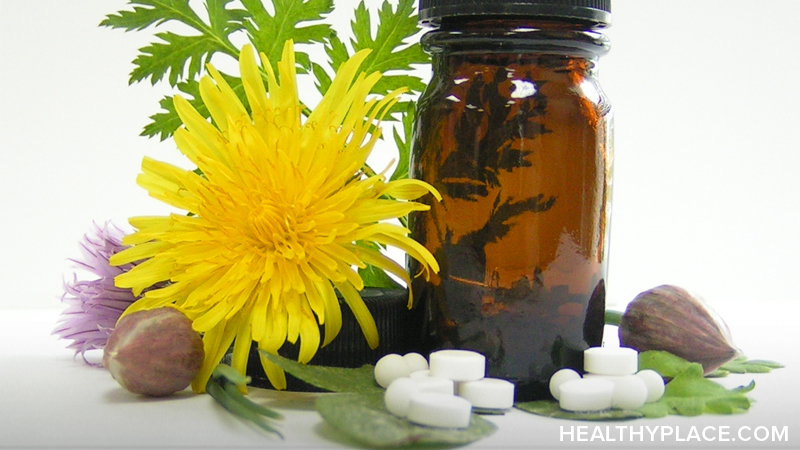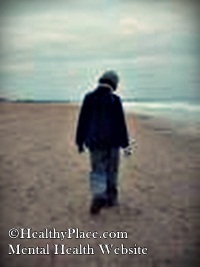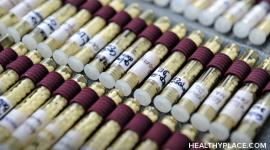Alternative Treatments for Autism

Parents of autistic children look outside traditional medicine to alternative treatments for autism, including diet, nutritional supplements, chelation therapy, interactive play, and bodywork.
Nicky's daycare teacher Elise brought it to Kara's attention first. "Your son's not really interacting with the other kids," she told her. Every day when he comes in, two-and-a-half-year-old Nicky must walk a particular path in the exact same way before he can acknowledge anyone in the room, Elise said. He carefully lines up all his toys, always in the same manner, but he never plays with them. He doesn't look at anyone else, but even the slightest noise or a gentle touch can immediately cause him to scream in terror. Doctors soon confirmed what Elise and Kara expected: Nicky was autistic. Their recommendations: speech and occupational therapy, but beyond that, they cautioned, there wasn't much anyone could do.
Kara immediately began learning all she could about autism and discovered that there were, indeed, plenty of avenues to explore and approaches to try. They ran the gamut from changing Nicky's diet to using behavioral modification techniques, from giving him weekly massages and high doses of vitamins to introducing him to martial arts."What I did discover," Kara said, "was that not every therapy works for every kid. And a combination seems to work the best."
More than one disorder
The problem, of course, is that autism isn't any one thing, nor does everyone exhibit the same characteristics of the condition. First discovered in 1943 by Leo Kanner, a physician at Johns Hopkins Hospital, autism is a developmental disability that typically manifests within the first three years of a child's life. Four times more likely to affect boys than girls, autism's symptoms include the inability to communicate with and relate to people, unusual or very limited interests, severe gastrointestinal problems, and hypersensitivity to any of the senses. Sometimes autistic children will also exhibit self-destructive behavior.
Around the same time that Kanner discovered autism, a German scientist, Dr. Hans Asperger, identified what he called an "autistic" condition, which later became known as "Asperger's syndrome." People with Asperger's tend to be highly intelligent and very verbal—the opposite of those with "classic autism" who are often nonverbal and socially isolated—and may have a compulsive interest in, and encyclopedic knowledge about, a specific topic or special interest.
Today both conditions are classified as Autism Spectrum Disorders (ASD), a header that includes Pervasive Developmental Disorder (PDD) or atypical autism, Rett Syndrome, Childhood Disintegrative Disorder (CDD), and some say Attention Deficit Disorder and Attention Deficit Hyperactivity Disorder (ADD/ADHD) as well.
And the cause is?
 Although the cause or causes of autism remain elusive, we do know what autism is not. It is not a mental illness nor is it a behavioral problem of unruly kids, and it does not have a clear-cut, direct genetic link.
Although the cause or causes of autism remain elusive, we do know what autism is not. It is not a mental illness nor is it a behavioral problem of unruly kids, and it does not have a clear-cut, direct genetic link.
In 1964, Bernard Rimland, a psychologist and father of a son with autism, wrote a book, Infantile Autism: The Syndrome and Its Implications for a Neural Theory of Behavior, in which he argued that the condition has a neurological basis. Rimland's thesis almost single-handedly convinced the psychiatric community that autism was a biological—not an emotional—disorder and that viewpoint continues today.
For decades, autism was considered very rare, with only one to three autism births per 10,000. But by the late 1990s, something happened. Autism cases skyrocketed to between 20 and 40 births per 10,000 and are now estimated at between 60 and 80 cases per 10,000 (1 in 166 children) in some states. In the 1990s, while the US population increased 13 percent, autism cases increased 172 percent, according to the Autism Society of America. Some experts claim that this rise in "reported" cases simply means better diagnostic tools and more responsible recording methods.
But others, among them some autism advocacy groups, lawmakers, and healthcare practitioners, suggest that the epidemic is real. And they attribute it to exposure to toxic chemicals and viral infections, problems during pregnancy or delivery, repeated use of antibiotics, particularly in the first year of life, trauma, and a possible link to the heavy metals (such as mercury) found in vaccines. Some statistics suggest that a high percentage of autistic children are born to mothers with Rh-negative blood. Researchers speculate that this may be because the mothers typically receive RhoGAM shots throughout their pregnancy to reduce complications and these shots, up until 1991, contained high doses of mercury.
Is there a cure for autism?
Conventional medicine will say no. Mothers like Krista Vance will tell you otherwise. Her son Jamie, in his first year of life "was walking, had wonderful words, and was very agile and coordinated." A traumatic illness and many invasive procedures later, "Jamie had slipped away from us, falling into a place called autism," she says. Several years later doctors and Jamie's parents have pronounced him cured. While scientists struggle to identify the cause and announce a cure, Jamie and Nicky's families have found more innovative approaches like diet, nutritional supplements, chelation therapy, interactive play, and bodywork to be helpful treatments—often with amazing results. Before embarking on any treatment journey, most parents put their team in place; that is, they found doctors, homeopaths, massage therapists, nutritionists, aides—any advocates whose advice they could trust and who encouraged them to actively contribute to their children's healing.
Kara and Krista offer this advice for other parents of autistic children: Connect with families who are on a similar journey, and never give up. Find healthcare practitioners who specialize in alternative approaches, such as doctors from Defeat Autism Now! (DAN!). And remember that each child is unique, what works for one may agitate another, and just because an option doesn't work right now doesn't mean it won't later on. But most important, learn to trust your intuition. While doctors and researchers can offer invaluable advice based on studies and scientific evidence, you may not have time to wait for the results of such studies when your child is in need. In the meantime, by trial and error (and keeping copious notes on your child's progress and setbacks), you may discover things that help him and other things that make his symptoms worse. In the case of autism, mothers (and fathers) often know best.
Let's all join in
Early on, when Krista searched for how to help Jamie, she learned that only one person had ever been "cured" of autism, Raun Kaufman, who received a diagnosis of severe autism at 18 months old and graduated from Brown University 18 years later. The doctors told his parents, Barry and Samahria, that he would never speak, never read, and never be able to care for himself. He spent much of his time flapping his hands and twirling plates, and was unable to make eye contact or communicate in any way. The only solution, the doctors said, was to institutionalize him. The Kaufmans chose instead to get to know him, to gain his trust by entering his world since he couldn't function in theirs. They spent as many as 12 hours a day, seven days a week, sitting with him in a bathroom free of outside distractions, twirling plates if he twirled plates, spinning in circles right along with him, or flapping their hands in unison with his. They never looked at his condition as a tragedy; they only saw this amazing little boy, as Raun wrote years later, "touching the sky in a world of his own creation." By the time Raun turned 5, all signs of autism had vanished.
Today Raun helps his parents and sister run The Son-Rise Program, which offers training programs for parents and professionals who want to learn how to reach their own autistic children. The basic premise of this program—and others like it—is that you must lead the children out of their isolation by first meeting them where they're most comfortable. Once you gain their attention and, most important, their trust, you can begin to work with them on the skills they need to function in the world. To get more information, check out their website at autismtreatmentcenter.org. Krista cautions that the Son-Rise method is time- and emotion-intensive and requires a community approach to treatment.
Repair and renew
According to Sidney Baker, MD, a cofounder of DAN!, the first order of business is to "clean up the gut." So many autistic children suffer from food allergies, overgrowth of intestinal yeast, leaky gut syndrome, and sensitivity to sugar and dairy, that if your plan doesn't address digestive issues, Baker says, "the rest of the healing effort will be more complicated and less effective." Your child may need a radical diet adjustment and a round of prescription antifungals to get rid of yeast overgrowth, which can be immensely effective. Be forewarned, though: Any time you start to kill off bacteria in the gut, your child may experience "die-off" symptoms, which means thins can worse before they improve.
Changing any child's diet to wheat-free, dairy-free, and sugar-free requires patience, but for autistic children who can be very strong-willed, it can be a nightmare. It helps if the whole family makes a commitment to eat the same diet. Get advice from other parents and consult diet books, websites, and nutritionists. Read the article on celiac disease on page 74 to find out more information on wheat- and gluten-free choices.
Supplement their diet
Lewis Mehl-Madrona, MD, PhD, author and associate professor at the University of Saskatchewan College of Medicine in Saskatoon, Canada, recommends vitamin therapy to control inflammation, possibly caused by viral infections, vaccine responses, leaky gut, a lack of digestive enzymes, and the inability to metabolize fatty acids. To counter such inflammation, he uses antioxidants like vitamins C, A, and E and essential fatty acids such as evening primrose oil, fish oil, and flaxseed oil. Research also suggests that autistic children may have a methyl-B12 deficiency, so many parents have opted to give that supplement through injections.
Get the mercury out
Parents of 324 children with autism who responded to the Autism Research Institute's survey reported that 76 percent of children improved after detoxification of heavy metals, making that procedure (called chelation therapy) a critical step in treating autism. Chelation therapy removes heavy metals that are toxic to the nervous system, such as mercury, lead, aluminum, and arsenic, from the body.
Krista credits chelation therapy and cleaning up Jamie's intestines with a 90 percent improvement in her son's symptoms. She worked with Terry Grossman, MD, a physician in Boulder, Colorado, who is an expert in chelation. Chelation therapy takes patience, though. "It usually takes about four to 12 months to remove significant amounts of toxins and to see strong improvement," Grossman cautions.
Trial and error
Therapies abound—both new ones and the tried-and-trues—to treat autism and they can be daunting and confusing. Keep accurate records of everything you try, including the frequency and dosage and your child's response (any changes in sleep patterns, eating, behavior, speech, and physical symptoms), and communicate directly and often with members of your "team." Choose doctors and healers who aren't afraid to try new approaches, and don't be shy about asking for help. Most of all, don't lose sight of the fact that your child is a precious individual with his own story to tell and his own gifts to share.
Other therapies that help
A variety of other modalities, either alone or in combination, can help children with autism-spectrum disorders.
Massage therapy reduces anxiety and stress hormones. In one study, parents of children with autism aged 3 to 6 massaged their kids for 15 minutes before bedtime for a month, after being trained by a massage therapist. The massaged kids performed more "on-task" at school and had better social interactions with their peers and fewer sleep problems than those who didn't get massages. Craniosacral therapy has also proven beneficial.
Homeopathy has been used successfully in treating sleep disorders as well as speech challenges. Because treatments are individualized, work with a homeopath skilled in treating autism who can recommend the most advantageous remedies.
Sound therapy (Samonas) is a technique that uses sound vibration to stimulate the brain. This type of therapeutic listening, developed by Ingo Steinbach, a German engineer, appears to enhance a child's ability to focus, improve speech, and help with socialization skills.
Applied Behavioral Analysis (ABA) appears to work well, especially for children who have Asperger's syndrome. ABA is a set of behavioral modification techniques developed in the 1960s by Ivar Lovaas at UCLA. ABA's focus is to teach children how to learn in the real world by breaking down tasks into very simple steps. Even the tiniest success elicits a reward. Slowly, as the child succeeds in each task, the therapist weans him from the rewards. The downside is that ABA is time-intensive and very expensive.
Source: Alternative Medicine
APA Reference
Staff, H.
(2008, October 30). Alternative Treatments for Autism, HealthyPlace. Retrieved
on 2025, December 6 from https://www.healthyplace.com/alternative-mental-health/autism-alternative/alternative-treatments-for-autism


